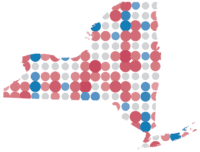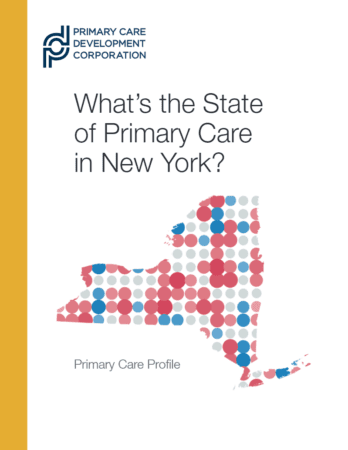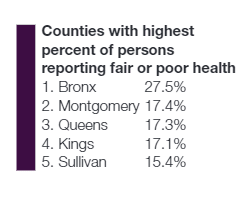Lack of Access to Primary Care Linked to Poor Health Status in New York State


New Yorkers’ health status is closely associated with access to primary care, according to new findings from the Primary Care Development Corporation (PCDC).
Funded by a New York State Legislature grant, The New York State Primary Care Profile analyzes proprietary and publicly available data to assess primary care access county-by-county.
PCDC identified significant correlations — between primary care access and overall health status; higher poverty rates and worse health outcomes; and rural counties and a lack of primary care access — based on defined measures of access and need.

Among the data:
“PCDC’s study highlights the critical intersection between primary care access and health equity across New York,” said PCDC CEO Louise Cohen. “Thanks to the New York State Legislature, we were able to perform the statistical analysis necessary to illustrate correlations between a lack of primary care access and worse health outcomes. These themes persist even in a state like New York, which is viewed nationally as a health care leader.”
The primary care access measures are intended to capture New Yorkers’ ability to gain entry to the health care system by having access to sites, insurance coverage to pay for needed services, and providers with whom to develop ongoing relationships to meet their health care needs.

Recommendations include ensuring a sufficient number of primary care providers in every county, working toward primary care access parity for people living in rural communities, and encouraging capital access and reimbursement models that reward proven quality programs.
“We have real gaps in primary care, and that’s a real obstacle to good health,” said New York State Assembly Health Committee chair Richard N. Gottfried. “PCDC’s report shows how serious the problem is and it’s an essential guide to where we need to put more resources.”
PCDC is ultimately committed to ensuring that all New Yorkers have access to effective, culturally competent primary care. Primary care is considered accessible when a person can receive the primary care services needed that are timely, affordable, and in a geographically proximate location. Effective primary care means that providers and services are accessible, affordable, comprehensive, ongoing, and coordinated.
Increasing primary care access across New York, as in other states, is critical to creating healthy communities, ensuring health equity, and reducing health care costs. Primary care is often the first point of contact with the health care system and can prevent, identify, and treat illnesses as well as promote wellness.